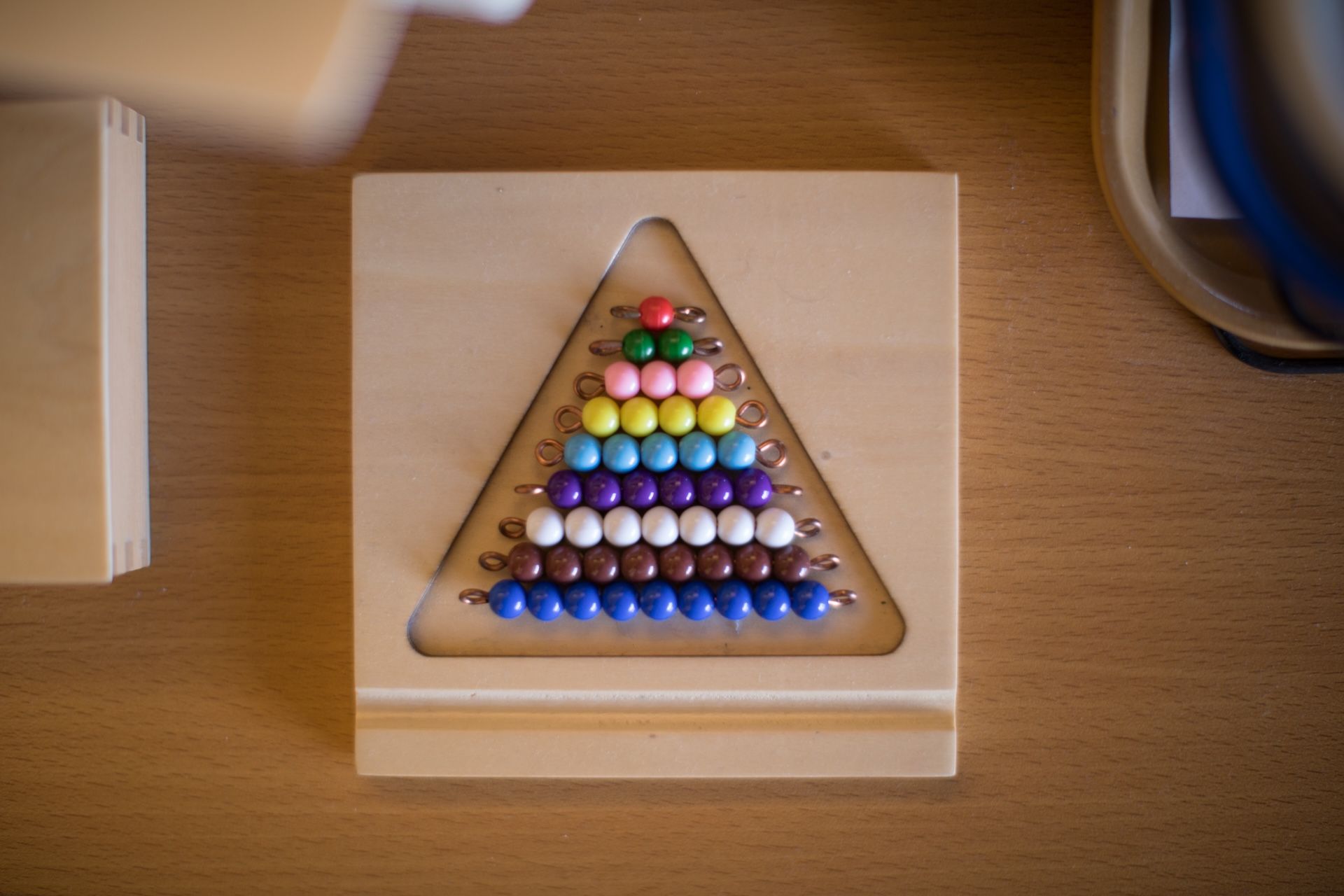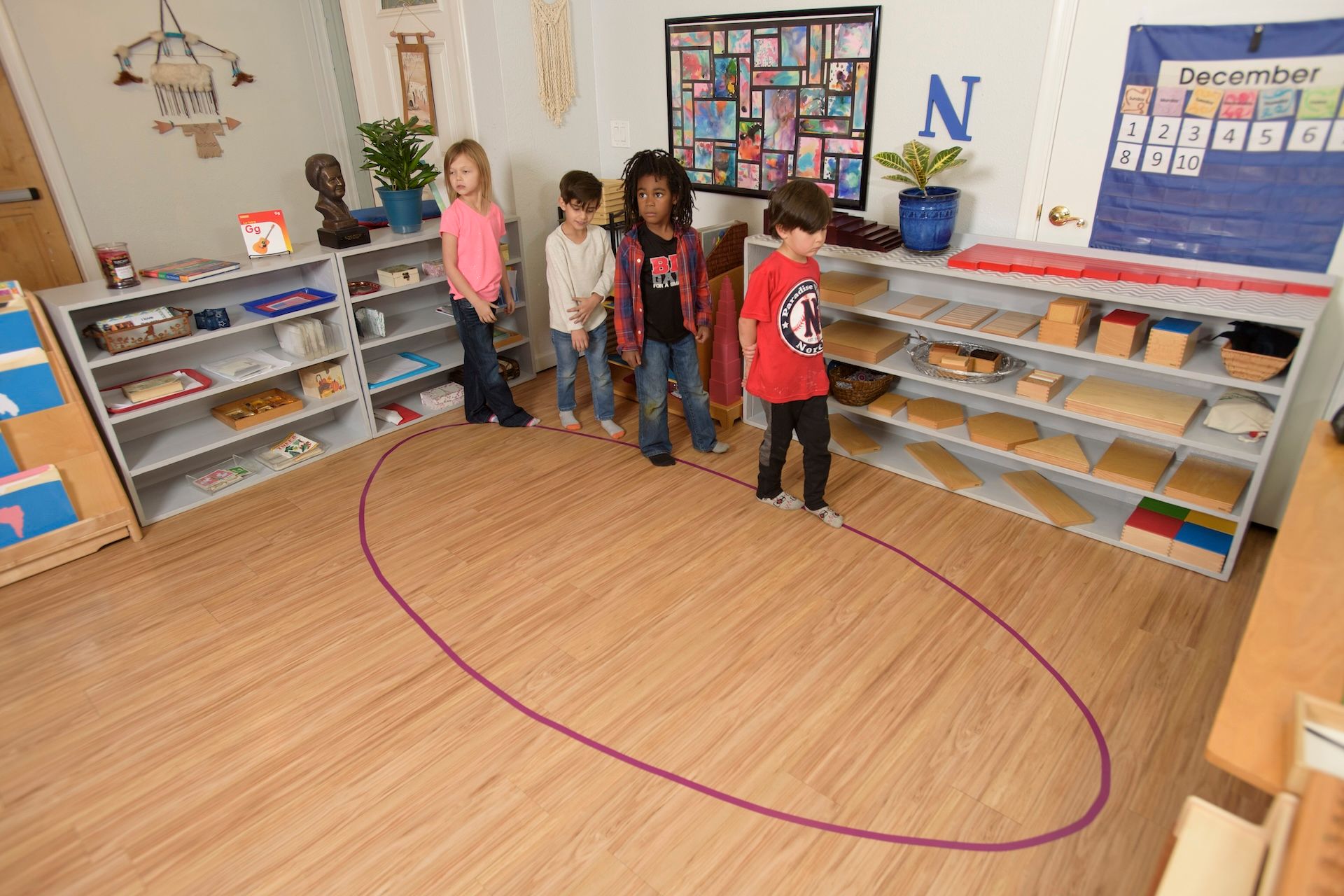
Montessori educators design classrooms with specific goals in mind. The environments we work in are not disorganized or unplanned. On the contrary, they’re carefully structured to support children as they learn and grow.
In The Secret of Childhood , Maria Montessori wrote, “The first aim of the prepared environment is, as far as it is possible, to render the growing child independent of the adult.” As children grow, our goal is to support them as they learn to take responsibility for their own growth and learning. Using six key principles, we create Montessori environments that give children the freedom to learn for themselves.
1) Freedom
In a Montessori environment, children need freedom to explore. Following Maria Montessori’s teachings, we carefully structure environments to give each child plenty of room to move around. We give children the freedom to move around, socialize, and explore with as little outside help as possible. This indirectly teaches freedom of choice and encourages responsible independence in young children.
2) Structure and Order
The principle of structure and order balances freedom in Montessori environments. A chaotic environment doesn’t encourage freedom, only uncertainty. Providing a structured, ordered environment helps children feel safe and secure. They can count on their environment responding in ways that make sense and become comfortable with how they fit into the world.
3) Beauty
A simple, beautiful appearance characterizes Montessori environments. They’re uncluttered, well-maintained and decorated with simplicity and elegance. We design environments with an aesthetic of peace and tranquility because we believe beauty in the environment invites a focused, relaxed attitude. And that sort of environment encourages learning.
4) Nature and Reality
Maria Montessori had a deep love for nature and she didn’t believe in keeping children in indoor classrooms all day. As long as the weather isn’t too bad, Montessori classes spend part of each day outside. In addition, most Montessori environments use natural building and decorating materials indoors. The classrooms also include child-size versions of objects like chairs, eating utensils, and gardening tools to ground children in the real world.
5) Social Environment
Interacting with others teaches children empathy, compassion, and strong social skills. And in a Montessori environment, we don’t confine children to interacting only with children their own age. Montessori classrooms combine children of similar age ranges, giving older children an opportunity to mentor. For example, the Primary Program includes children ages three through six and Lower Elementary is for children six through nine. Children also get individual attention from their adult teachers.
6) Intellectual Environment
With the other five elements in place, we can work on the intellectual side of schooling. Sometimes, book learning is the only focus in schools. With the Montessori method, however, we take a more holistic approach. Because children feel safe and supported in their environment, they’ll have the focus and interest they need to learn naturally.
The Montessori method is a time-tested way to encourage independent learning in children and help them grow into responsible adults. Because the prepared environment is a big part of this mission, you’ll find all six of these principles at use in a Montessori classroom every day. You can also incorporate these in your house if you’re practicing Montessori at Home .
Hours
MONDAY - FRIDAY
HALF DAY: 8:30a – 12 noon
ACADEMIC DAY: 8:30a – 3:30p
EARLY CARE: 7:00a – 8:30a
AFTER CARE: 3:30p – 6:00p
OFFICE: 8:00a - 4:00p
Programs
Connect
Pebblecreek Montessori




